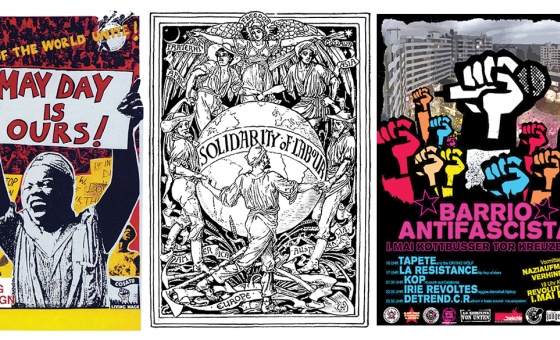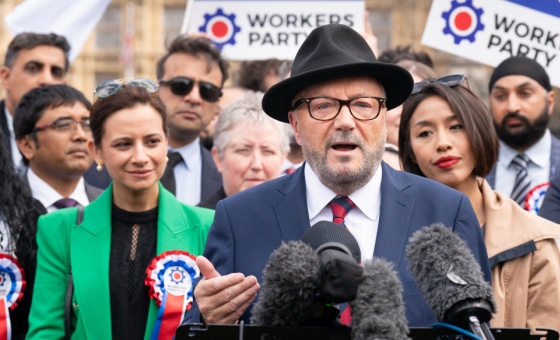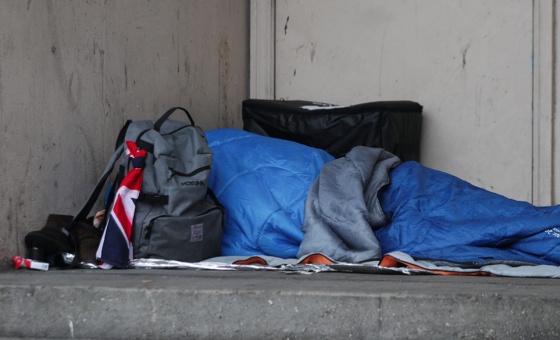This is the last article you can read this month
You can read more article this month
You can read more articles this month
Sorry your limit is up for this month
Reset on:
Please help support the Morning Star by subscribing here
AN apology. And a witch-hunt.
The hypocrisy of those trying to drive anti-racist MP Diane Abbott out of political life is nauseating.
Writing something wrong about the nature of racism and its shifting targets is not the same as being racist. Any notion of due process went out the window when Keir Starmer suspended her and said the withdrawn letter was anti-semitic.
The letter was mistaken, but it wasn’t that. Tellingly, there was no mention by Starmer, or others joining the lynch mob, of Gypsy, Roma, Traveller (GRT) and Irish people.
Their representatives have been calmly explaining that they experience actual racism. Broadcasters have blanked them.
So we have people claiming to be outraged at the idea of a “hierarchy of racism” betraying their own hierarchy by emphasising that Jewish people face racism — they certainly do — but ignoring that faced by GRT and Irish people.
The last thing these people seem to want is the open and sophisticated discussions we need about racism, xenophobia and prejudice.
Those involve history, differential impacts on different groups and how racism changes — not just in the past, but before our eyes.
They would prefer instead pious phrases glossing over realities such as the report by a Commons committee last week into maternal health.
It found rising maternal mortality rates in deprived areas, where women are two-and-a half times more likely to die than in rich areas.
Black women are nearly four times more likely to die from childbirth than white women, and Asian women twice as likely.
The government has issued statements of concern but has done precious little to identify the precise reasons for these disparities let alone resolve them.
Ugly voices on the radical right claim the racial disparities must be “down to genetics” and not to the effects of racism. There is an alarming uptick today in racist and debunked falsehoods such as sociobiology.
A different face of structural racism came with the government’s Police Act last year. A section targets GRT people.
If they stop “illegally,” their homes can be seized, any adult can be imprisoned for three months, and fines of 2,500 levied. One savage illustration of the many faces of racism.
Persecution of Traveller people in England goes back a long way. The Ordinance of Labourers in 1349 allowed for the whipping and branding of those deemed vagrants. A 1554 law permitted execution of those calling themselves “Aegyptians,” Gypsies.
Control of the popular masses and enforcing the discipline of labour were the drivers for prejudices and repression that would later feed into systematic racism. And racism today remains intimately connected with control and exploitation.
In this same late medieval period, already established anti-semitism based upon religious difference and church reaction was starting to prefigure modern racism.
In post-1492 Spain conversion (usually forced) to Christianity became increasingly insufficient for Jewish people to escape oppression.
The descendants of “Conversos” could be persecuted, considered still Jewish by “bloodline” even though by faith, Christian. A previously religious category was becoming “racialised.”
It is with the transatlantic slave trade from the 17th century onwards that racist ideology fully takes shape. This racialisation produces “race.”
As the great Trinidadian intellectual and politician Eric Williams put it, it was the slave trade that gave rise to racism (and thus “race”), not the other way round.
European states and societies experiencing the first stirrings of the Enlightenment faced a flat contradiction.
Amid thunderous talk of the “Rights of Man” there was a category of Man — the slave — who was less free than even a medieval serf or forms of unfree labour in western Asia hundreds of years earlier.
Over the course of a century that paradox powered this resolution: that the African slaves were in fact not fully human but of an “inferior race.”
In this way the majority of the signers of the US Declaration of Independence, which opens with the clarion “all men are created equal,” were in fact slave owners.
The 19th century brought the racism of empire buttressed by pseudo-scientific racist ideology, either outright invention, or corruption of genuine science, such as Darwin’s theory of evolution.
Thus we have the racialisation of the people of Ireland, Britain’s oldest colony. Existing prejudices and repression of rebellions went further to seeing the Irish as a separate race.
It served many functions. The Famine, in which a million died and a million fled the country, could be explained away with the racist filth that an inferior race had brought it upon itself by overbreeding.
Racist disregard could soothe the consciences of good Christian capitalists exporting food from Ireland to Britain at the height of the Great Hunger in 1847.
As Karl Marx later noted, English employers pitted settled English against desperate Irish immigrant workers, who they used to try to undermine wages. Popular anti-Irish sentiment was, he wrote, “the secret of the impotence of the English working class” and was artificially sustained by “the comic papers.”
Nearly all Irish and English people were white. English cartoons routinely depicted Irish people as half ape in just the same way as black Africans were shown.
A contemporary version of this is right-wing London papers responding to Joe Biden’s visit to Ireland with cartoons depicting him as a stupid leprechaun.
With colonialism and imperialism abroad, and social crises and discontent at home, race-thinking in the 19th century proved extremely useful in providing false explanations and turning difference into division.
The urban poor — mainly English — were often referred to as of an inferior “stock” or race, a class of hereditary criminality.
Similar racialised stereotypes fed into the anti-semitic ideology and agitation against poor Jewish immigrants fleeing pogroms in eastern Europe.
By the 1930s anti-semitism was central to racist and fascist activity in Britain. The principal targets of racism can shift, as can what form of racism is dominant at any one time.
But that does not mean that other racisms just fade away. Black and Asian immigration was the target of Enoch Powell and other racists.
That did not stop the Irish Troubles being accompanied by a terrible resurgence of anti-Irish racism in the 1970s — by the state, in the media and at a popular level.
In the wake of the 1981 inner-city riots — which were in fact multiracial rebellions — the Thatcher government pitched African-Caribbeans against Asians deploying two sets of racist stereotypes.
Black youth were lawless and from “dysfunctional families.” Asians were hardworking with strong families and corner-shop business sense.
Two decades later, the war on terror brought a deluge of directly anti-Muslim racism. Now black Britons were lauded for their “integration into Britain.”
Muslims apparently self-segregated and were responsible for their own poverty and for terrorism.
The London riots of 2011 brought another shift. Older racist myths of black criminality were reheated — Asian and Muslim shopkeepers were back to being good citizens on the side of law and order.
It is a mistake to see the structure of racism as fixed. Racist ideology is not simply a ruling-class plot to divide and rule. But it is also a deliberate effort at divide and rule.
The creation of Islamophobia out of extant anti-immigrant and anti-Asian racist stereotypes required a huge political effort.
Different groups experience racism in different ways at different times. Understanding precisely a changing picture at any one moment is vital if we are to confront racism in all its forms.
Recognising these differences is not the same as some hierarchy of racism. But it is vital not to exaggerate differences. Tory politicians and an energetic radical right are doing this.
They contrast the educational achievement of more recently arrived Nigerian children — often of professional families who have long planned their move — to black Caribbean children, or Somali boys.
The false implication is that there is no overall anti-black structural racism.
It would be foolish to find ourselves going along with a government strategy to deconstruct the idea of racism by contrasting ever more narrowly defined groups. It loses sight of the centrality of racism as a whole to the workings of capitalist exploitation.
While that often involves direct exploitation through lower wages and access to social goods, it does not have to.
Racist ideology is in itself a powerful weapon of disorganising the working class and the oppressed.
At points of intense social and political breakdown existing racisms and racist prejudices can be inflamed by reactionary political forces and hurled at even minorities who were seen as relatively secure and integrated.
This week marks the anniversary of the beginning of the Armenian genocide 108 years ago in what is now Turkey.
The Armenians of western Turkey were not an especially impoverished community. The opposite.
Many prominent families were established traders, merchants, financiers and manufacturers. That did not stop them being rounded up and sent on death marches that killed between 800,000 and 1.2 million.
Prior prejudices and occasional violent attacks were transformed into genocidal racism by an elite trying to carve out a new ethnically defined state in the midst of the first world war.
On a much lesser scale we can recall the expulsion of Greeks from post-independence Egypt, and Indians from Uganda, Malawi and Kenya. All of them were disproportionately in trading, business and administration.
Amid social turmoil and popular discontent with corrupt leaders who did not deliver on the radical promise of independence all the ills of society were blamed on those scapegoats.
The most terrible instance of this, of course, is the radicalisation of anti-semitism in the Third Reich. It led to an eliminationist racism put into horrific practice in the Holocaust.
Racism in all its forms is poison in the veins of society and especially of the working-class movement.
Our greatest weapon against it is building fighting unity of the oppressed and exploited.
It is in that spirit that we bring the morphing evil of racism under the microscope. In order to identify the central battleground at any one time and to lift the fight against all forms of racism.
The better to end it, and forces that produce and renew it.











